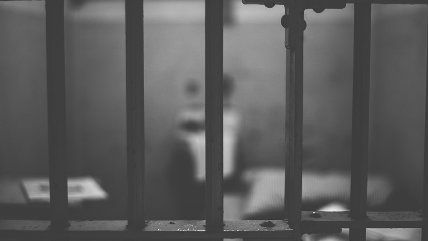State and Local Spending On Prisons Has Grown Three Times as Fast as Spending on Schools, Says New Report
Young black males without a high school diploma are more likely to be incarcerated than employed.


According to a new report from the Department of Education, spending over the past three decades by state and local governments on prisons and jails has grown three times as fast as spending on public education.
Based on data collected between 1979 and 2013, state and local expenditures for education from preschool through grade 12 increased by 107 percent. In comparison, state and local expenditures for corrections grew by 324 percent.
While the report notes these increases are much smaller when collected data is adjusted for population change, corrections still outpaced education spending in all but two states. In 24 states, there was a growth rate in per capita corrections spending more than 100 percent higher than per pupil education spending.
The two states where public education spending increased more than correctional spending were New Hampshire and Massachusetts, yet it was not by much; the differences were 1 and 2 percent, respectively.
Why the stark differences in spending? One of the biggest factors that the report notes is the growth in the number of people being sent to prisons and jails. The report specifically mentions data collected by the Bureau of Justice Statistics showing that the number of people incarcerated in state and local facilities more than quadrupled between 1980 and 2014. This dramatic increase is, as the study claims, "due in part to the enactment of additional, often lengthy mandatory minimum sentence laws."
What may be unsurprising to many is that certain groups were disproportionately affected. As the report states:
Even for offenses for which there are few differences by race or ethnicity in the likelihood of committing a crime, individuals of color—black youth in particular—are more likely than white individuals to be arrested and receive longer sentences for the same offenses (CEA 2015). For example, black males are six times more likely to be incarcerated than white males, and black students are about two times more likely to receive a referral to law enforcement or be subject to a school-related arrest than white students (Pew Research Center 2013; OCR 2016). Additionally, children with incarcerated parents face an increased risk of a variety of adverse outcomes, including antisocial and violent behavior and lower educational attainment (Johnson 2009).
The paper also observes a relationship between poor classroom performance and incarceration:
Among state prison inmates, available data suggests that two-thirds have not completed high school (BJS 2009). Young black males between the ages of 20 and 24 who do not have a high school diploma (or an equivalent credential) have a higher chance of being incarcerated than of being employed (Neal and Rick 2014).
The report concludes by arguing for state and local governments to shift some funds away from incarceration and toward education investment—not exactly surprising considering the source. Some of the policies proposed include increasing teacher salaries, increasing access to high-quality preschools, and providing education opportunities to those already incarcerated.
While the Education Department argues that graduation rates rise when education funding increases, Reason's Nick Gillespie has pointed out that this doesn't necessarily increase academic success. Being enrolled in school doesn't do a person any extra good if he doesn't gain anything from being in the classroom.
What's interesting is that sentencing reform was not mentioned as a policy suggestion in the report. As Families Against Mandatory Minimums explains, those rules have a major influence on how people are sentenced and are at least partially responsible for America's growing prison population. Plus, the federal government has just as much—if not more—say in this realm as states do.
Valerie Jarrett, a senior advisor to President Obama, did talk about the impact of mandatory minimums in a press call on the report Thursday. "We know mass incarceration is not good for our country and does not make us safer," she said. "It is long past time for us to come together across party lines at the federal level and do something about it."
(CORRECTION: The growth in spending, not the raw spending total, was three times as high for prisons and jails as for schools.)


Show Comments (68)